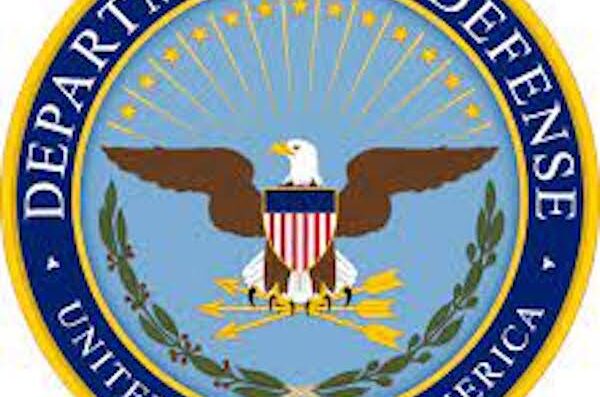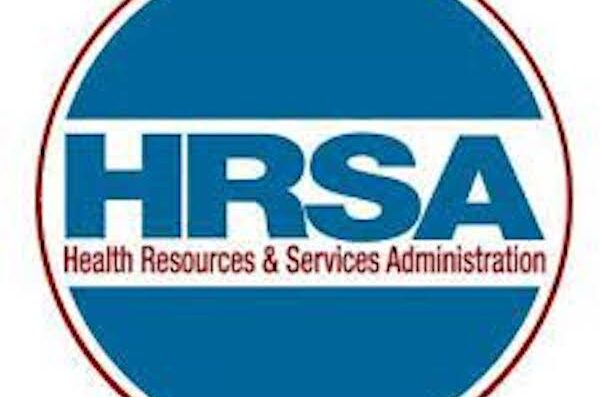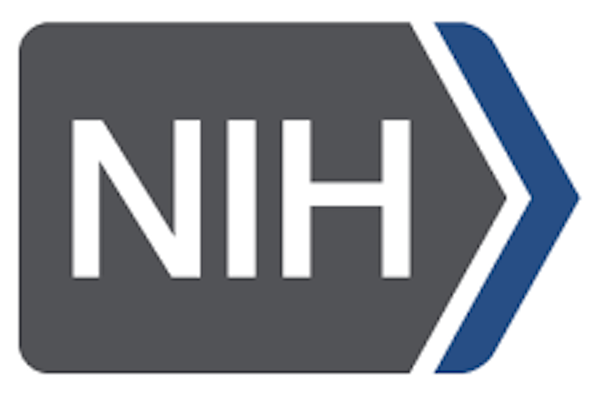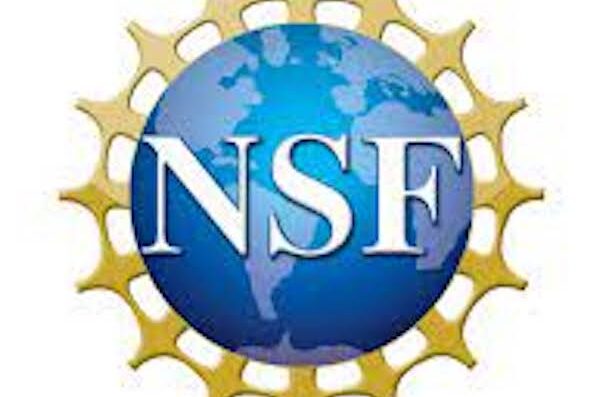Templates and Guidance
Developing your proposal
Preparing a grant application can take considerable time and energy. The Office of Research Development has assembled overviews of common federal sponsors, links to forms and examples of administrative documents required for many grant applications, templates, and some advice for preparing your grant application.
Agency Overviews Heading link
Guidance for Biosketches Heading link
Many sponsors have specific formatting requirements for investigator biosketches. It is important to carefully read each solicitation (e.g, FOA, RFA, RFP) to determine which project personnel need to submit a biosketch and what format to use.
Most sponsors require investigators and project key personnel to provide a biosketch as part of a proposal submission. Since several agencies require that biosketches adhere to a specific format (e.g., NIH, NSF, NASA and DOD), it is important to be familiar with their requirements.
We have compiled an overview of current biosketch formatting requirements for NIH, NSF, DOE and DOD for your reference. Since agencies do, periodically, update their guidance, we have also provided links to their biosketch instructions. Along with reviewing the instructions, it is important to carefully read each solicitation to determine which project personnel need to submit a biosketch, what format should be used and whether there are any special requirements.
NIH
NIH biosketch templates, as well as instructions for biosketch preparation are available here.
NIH Biosketch instuctions, format pages, and samples
NIH requires submission of a biosketch for each proposed senior/key personnel and other significant contributor on a grant application. Some funding opportunities or programs may also request biosketches for additional personnel (e.g., Participating Faculty Biosketch attachment for institutional training awards).
Information to include:
Non-Fellowships consists of three (3) sections:
- Personal Statement
- Current Positions, Scientific Appointments and Honors
- Contributions to Science
Fellowships consists of four (4) sections:
- Personal Statement
- Current Positions, Scientific Appointments and Honors
- Contributions to Science
- Scholastic Performance
Formatting guidelines:
- Limited to 5 pages
- Figures, tables and graphics are not allowed
- Section C-Contribution to Science, requires researchers to describe their most significant contributions (not to exceed 5). Each description should be limited to one-half page or less and should summarize the following:
- Provide historical background that frames the scientific problem
- Outline findings of prior work, and subsequent effect
- Describe their roles in the discoveries
- Reference up to four (4) peer-reviewed publications or non-publication research products for each discovery
- OPTIONAL: Provide a link (URL) to a full list of publications. The URL must be to a Federal Government website (a .gov suffix). NIH recommends using My Bibliography.
Sponsor Resources:
NSF
NSF biosketch template, instructions, and guidelines on which project personnel are required to submit a biosketch can be found here.
NSF Biosketch Instructions PAPPG NSF 23-1
A biosketch is required for each individual identified as Senior Personnel on an NSF proposal. This 3-page document outlines an individual’s education and training, their appointments and positions, and other information that helps NSF assess how well qualified the individual is to conduct the proposed activities.
Information to include:
A brief outline of the information you will need to include is provided below.
- Identifying information.
- Organization and location.
- Professional preparation.
- Appointments and positions.
- Products.
- Synergistic activities.
Formatting guidelines:
DOE
The DOE requires that biosketches include the following items within its page limit:
- Education and Training: Undergraduate, graduate and postdoctoral training, provide institution, major/area, degree and year.
- Research and Professional Experience: Beginning with the current position list, in chronological order, professional/academic positions with a brief description.
- Publications: Provide a list of up to 10 publications most closely related to the proposed project. For each publication, identify the names of all authors (in the same sequence in which they appear in the publication), the article title, book or journal title, volume number, page numbers, year of publication, and website address if available electronically. Patents, copyrights and software systems developed may be provided in addition to or substituted for publications. An abbreviated style such as the Physical Review Letters (PRL) convention for citations (list only the first author) may be used for publications with more than 10 authors.
- Synergistic Activities: List no more than 5 professional and scholarly activities related to the effort proposed.
- Potential Conflicts of Interest: Include a section entitled, “Identification of Potential Conflicts of Interest of Bias in Selection of Reviewers,” that identifies individuals who are conflicted with or potentially biased (favorably or unfavorably) against the investigator. This section – which does not count towards page limit – should include:
- Collaborators and Co-editors – List in alphabetical order all persons, including their current organizational affiliation, who are, or who have been, collaborators or co-authors with you on a research project, book or book article, report, abstract, or paper during the 48 months 92 preceding the submission of this application. For publications or collaborations with more than 10 authors or participants, only list those individuals in the core group with whom the PI interacted on a regular basis while the research was being done. Also, list any individuals who are currently, or have been, co-editors with you on a special issue of a journal, compendium, or conference proceedings during the 24 months preceding the submission of this application. If there are no collaborators or co-editors to report, state “None.”
- Graduate and Postdoctoral Advisors and Advisees – List the names and current organizational affiliations of your graduate advisor(s) and principal postdoctoral sponsor(s). Also, list the names and current organizational affiliations of your graduate students and postdoctoral associates.
Formatting guidelines:
- DOE requires the use of the format approved by the National Science Foundation (NSF), which can be generated by the Science Experts Network Curriculum Vita (SciENcv).
DOD
Biosketch requirements can vary depending on the DOD agency and funding opportunity. Please refer to the individual announcement for specific proposal requirements. It is recommended that investigators include all paid or unpaid positions with non-profit or commercial entities or academic or research institutions, including honorary positions, affiliated positions, joint positions, participation in Talents Programs, and relevant honors.
Information to include:
- Professional experiences and positions
- Bibliography of recent publications
Formatting guidelines:
- Files must be named as “Biosketch_LastName.pdf” where “LastName” is the last name of the respective individual.
- Suggested biosketch format is available in a Microsoft document on the “Funding Opportunities & Forms” web page in eBRAP. Use of this document is optional.
- The NIH biosketch format may also be used
- Each biosketch must be in PDF format prior to attachment
- Page limitations will be specified in the program announcement
Other Agencies
Institute of Education Sciences (IES – includes NCER, NCES, NCEE and NCSER) – uses NSF format that can be generated using SciENcv.
NASA requires biosketches from:
- PIs, Co-PIs, and any Co-Is in special categories* (2 pages max)
- Co-Is proposing to spend 10% or more of their time to the effort (1 page max)
*Co-I/Science PI (Co-I who is in charge of scientific direction of the project); Co-Institutional PI (Co-I at an organization other than the PI’s institution); Co-PI (Co-I at non-US organization may be designated as Co-PI if necessary to fulfill administrative requirements at Co-I institution).
Information to include:
- Professional experiences and positions
- Bibliography of recent publications.
Please contact RDS at rds@uic.edu with any question on other agency requirements.
Proposal Development Resources Heading link
-
Evaluating an opportunity
Before you roll up your sleeves and start working on a proposal, consider the following questions:
- Is UIC eligible to apply for this award?
- Are you eligible to be the principal investigator (PI)? Click here to learn more about UIC’s policy on Principal Investigator Eligibility and Approval Procedures.
- Is this a limited funding opportunity, where the sponsor only allows each institution to submit one application? Click here to learn more about UIC’s processes and procedures pertaining to limited funding opportunities.
- How much funding is available? Is this enough funding to cover the costs associated with the work that you aim to propose? Is a match or cost share required?
- What is the project period? Is this enough time to complete your project or progress it to a sensible milestone?
- What is the deadline for this application? Do you feel you have adequate time to prepare a high-quality proposal?
- Besides the project narrative and budget, what other documents are required for this application (e.g., letters of support, data management plans, mentoring plans)? Do you have what you need or know how to get what you need to prepare those documents?
- Does the work you intend to propose require partners at UIC? If so, who should they be?
- Does the work you intend to propose require external partners? If so, who should they be, and do you have connections to them?
- What projects have been funded by this program in the past? Are they somewhat similar to but not overlapping with your idea?
- Does this seem like a good fit for you now?
-
Budgets
Developing a project budget is a pivotal step in the proposal preparation process and can help the investigators think through the resources required at each project milestone. A budget must be a realistic reflection of project needs over time, including support for personnel working on the project commensurate with level of effort expended (salary and wages and fringe benefits), support for travel, materials and supplies, equipment, services required (e.g., computing time), participant support (including stipends, tuition, etc.for trainees), any subawards and all other costs related to the project. All proposed projects requiring use of UIC resources must be reviewed and approved by OSP prior to sponsor submission. Current fringe benefit rates and all approved indirect costs rates can be found here
It is important to align the budget period amounts to activities presented in the proposal to give a realistic view of expenses over the course of the project. Preparing a carefully considered, detailed, yet succinct budget justification that clearly ties costs to activities is critical. We stress the importance of contacting your business manager as early as possible in the proposal development process to ensure that person has time to work with you to prepare an accurate, error-free budget. PIs should recognize any changes to the budget cascade through the rest of the proposal development and submission process, so late-stage changes to the budget will precipitate changes to many other pieces of your grant application.
The Office of Sponsored Programs (OSP) provides templates, policies and guidance to help you develop your budget. In addition, see both the NSF Proposal & Award Policies & Procedures Guide or the NIH Application Guide for specific agency guidelines.
-
Facilities
Many grant applications require a description of the facilities available to conduct the work, often as a separate document in the proposal package.
A description of your facilities for a grant proposal should usually include a general overview of UIC as well as the following elements:
- Descriptions of laboratories and offices available, including square footage and features such as fume hoods, microscopes, and general lab equipment
- Specialized equipment available in the lab or department
- Computer resources
- Shared facilities available, including how they are managed and any access fees.
Information on shared facilities can be found at the Research Resource Center (RRC) webpages. The RRC, part of the OVCR, compromises 16 cores specializing in various techniques with experienced staff who are able to assist or fully execute your research projects. Detailed descriptions of the the instruments and expertise offered by RRC cores and resources are available here.
OVCR also oversees the Biologic Resources Laboratory (BRL) which is responsible for overseeing UIC’s animal care and use program. BRL provides services, training and support for PIs using animals as part of their biomedical research, testing and training. Policies and guidelines to facilitate research using animals, including the process for obtaining IACUC approval can be found here.
-
Other proposal resources
PRAIRIE Group for program evaluation
Housed in UIC’s Learning Sciences Research Institute, The PRAIRIE Group has expert evaluators available to collaborate on new projects based on availability and interest. Their experience includes logic models, program design, evaluation planning, educational program reviews, program documentation and evaluation systems development.
Corporate and Foundation Relations
The Corporate and Foundation Relations Team in UIC Advancement supports UIC’s mission by building strategic partnerships with local and national corporations and foundations for the benefit of the students, faculty, patients and communities we serve. They do this by:
- Serving as a connector between UIC, its programs and research, and corporate and foundation partners through outreach, communication and strategic engagement.
- Supporting faculty and staff through prospect identification, proposal development and relationship management.
- Encouraging collaboration and coordination to grow and enhance UIC’s opportunities for partnership and strategic investments.
Innovation
The Office of the Vice Chancellor for Innovation provides support for research partnerships involving industry as well as commercialization and entrepreneurship of research discoveries.
-
Other common proposal elements
Data Management & Sharing Plan
Sharing scientific data accelerates biomedical research discovery, enhances research rigor and reproducibility, provides accessibility to high-value datasets, and promotes data reuse for future research studies.
NIH Requirements:
NIH requires a Data Management and Sharing (DMS) Plan for all applications submitted to funding opportunities subject to the NIH Data Management and Sharing Policy. This policy applies to all research, funded or conducted in whole or in part by NIH, that results in the generation of scientific data. Applicants planning to generate scientific data are required to prepare a DMS Plan that describes how the scientific data will be managed and shared.
For more about expectations of the policy, see the Data Management and Sharing Policy Overview page. NOTE: Be sure to respond to any NIH Institute and Center or program-specific expectations related to data sharing outlined in the specific funding opportunity.
DMS Plans are recommended to be two pages or less in length. NIH has developed an optional DMS Plan format page that aligns with the recommended elements of a DMS Plan. NOTE: Hyperlinks and URLs are not allowed in the DMS Plan attachment.
Writing a Data Management & Sharing Plan
2023 Data Management & Sharing Policy FAQs
Sample Data Management & Sharing Plans
UIC OSP Memo on NIH Data & Sharing Plans 1-27-23
NSF Requirements:
NSF-funded investigators are expected to share with other researchers, at no more than incremental cost and within a reasonable time, the primary data, samples, physical collections and other supporting materials created or gathered in the course of work under NSF awards.
NSF General Guidance on Data Management Plans
Preparing Your Data Management PlanResource Sharing Plan (NIH)
The Resource Sharing Plan is required when the following items will be developed through NIH-sponsored research:
- Model organisms – unique model organisms, including unique mammalian and non-mammalian models
- Research tools – unique research resources that can be useful for many others and many projects
See NIH instructions on Resources Sharing Plans
Multi-Principal Investigator (MPI) Leadership Plan (NIH)
The Multi-PD/PI option presents an important opportunity for investigators seeking support for projects or activities that require a team science approach. This option is targeted specifically to those projects that do not fit the single-PD/PI model, and therefore is intended to supplement and not replace the traditional single PD/PI model. The overarching goal is to maximize the potential of team science efforts in order to be responsive to the challenges and opportunities of the 21st century.
MPI Leadership Plan Instructions
Postdoctoral Mentoring Plan
All NSF proposals that including funding support for postdoctoral researchers must include a one-page Postdoctoral Researcher Mentoring Plan (see PAPPG II.C.2.j). The goal of the mentoring plan is to provide the skills, knowledge, and experiences necessary to prepare postdoctoral fellows to excel in their chosen career path.
Contact UIC’s Office of Postdoctoral Affairs & Postdoctoral Association for additional guidance and resources. Email: postdoc_office@uic.edu
NSF Guidance on Postdoctoral Mentoring Plan Requirement
Responsible Conduct of Research
Federal responsible conduct of research (RCR) training requirements vary by agency. At present, three federal agencies (National Science Foundation, National Institutes of Health, and the U.S. Department of Agriculture’s National Institute of Food and Agriculture) require research personnel to complete training in research ethics and integrity.
National Institutes of Health (NIH) Requirements:
NIH defines responsible conduct of research as “the practices of scientific investigation with integrity. It involves the awareness and application of established professional norms and ethical principles in the performance of all activities related to scientific research.” NIH requires that trainees on an NIH institutional research training grant, individual fellowship, career development award (institutional or individual), research education grant, dissertation research grant, or other grant programs that have a significant training component have a minimum of eight hours of formal instruction at least once during each career stage and at least every four years.
NIH guidance on Responsible Conduct of Research
National Science Foundation’s (NSF) Requirements:
The NSF’s latest Proposal & Award Policies & Procedures Guide (PAPPG) expanded the requirements for Responsible and Ethical Conduct of Research (RECR) training. For NSF grant proposals submitted on or after July 31, 2023, the NSF requires all undergraduate students, graduate students, postdoctoral researchers, faculty, and other senior personnel supported by the proposed research project to complete an approved form of RCR training before any funding can be awarded.
Rigor and Reproducibility
Scientific rigor is the strict application of the scientific method to ensure unbiased and well-controlled experimental design, methodology, analysis, interpretation and reporting of results.
The four elements of rigor include:
- Rigor of the prior research
- Rigor of the proposed research
- Biological variables
- Authentication
Rigor and Reproducibility guidance
Authentication of Key Biological and/or Chemical Resources Plan (NIH)
Applicants proposing the use of established key biological and/or chemical resources are expected to include a plan to authenticate these resources in the “Authentication of Key Biological and/or Chemical Resources” attachment. “Key biological and/or chemical resources” refers to established reagents or resources that will be used in the proposed research. This includes but is not limited to cell lines, specialty chemicals, antibodies or other biologics.
This requirement applies even when the key resources were purchased or obtained from an outside source that provided data on prior authentication. The plan should be no more than one page.
Authentication of Key Biological and/or Chemical Resources Plan examples
FAQs – Authentication of Key Biological and/or Chemical Resources Plan
Select Agent Research (NIH)
Select agents are hazardous biological agents and toxins that have been identified by HHS or the U.S. Department of Agriculture (USDA) as having the potential to pose a severe threat to public health and safety, to animal and plant health, or to animal and plant products. The Centers for Disease Control and Prevention (CDC) and the Animal and Plant Health Inspection Service (APHIS) Select Agent Programs jointly maintain a list of these agents.
Include a “Select Agent Research” attachment if your proposed activities involve the use of select agents at any time during the proposed project period, either at the applicant organization or at any performance site. Please follow the Select Agent Research Application Guidelines and any instructions provided in your specific funding opportunity announcement (FOA) when completing the Select Agent Research attachment.
If the activities proposed in the application involve only the use of a strain(s) of select agents which has been excluded from the list of select agents and toxins, the select agent requirements do not apply. The CDC maintains a list of exclusions, which is available on the Select Agents and Toxins Exclusions website.
Vertebrate Animals (NIH)
The Public Health Service Policy on Human Care and Use of Laboratory Animals (PHS Policy) establishes federal guideline for the proper care and treatment of animals used in research. The PHS Policy defines “animal” as any live, vertebrate animal used or intended for use in research, research training, experimentation, biological testing or related purposes.
Federal policy requires investigators address the required Vertebrate Animal Section (VAS) criteria in the grant application for all performance sites where proposed work involving live vertebrate animals will be performed. This includes work involving animals obtained or euthanized for tissue harvest and generation of custom antibodies.
VAS Requirements
- Description of Procedures (Vertebrate Animals Section) – Provide a concise description of the proposed procedures to be used that involve live vertebrate animals. Identify the species, strains, ages, sex, and total number of animals by species to be used. If dogs or cats are proposed, provide the source of the animals.
- Justifications (Vertebrate Animals Section) – Provide justification that the species are appropriate for the proposed research. Explain why the research goals cannot be accomplished using an alternative model (e.g., computational, human, invertebrate, in vitro).
- Minimization of Pain and Distress (Vertebrate Animals Section) – Identify procedures or circumstances that may result in more than slight or momentary discomfort, distress, pain, or injury and describe the interventions to minimize discomfort, distress, pain, and injury including:
- Name or class of any tranquilizers, analgesics, anesthetics, or other pharmacological interventions
- Non-pharmaceutical interventions such as special housing and supportive care (for example, provision of fluids and warmth)
- Provision for post-surgical care
- Indicators for human experimental endpoints
NOTE – Investigators are no longer required to describe the methods of euthanasia in the VAS. Rather, these methods are addressed in section 1 of the PHS 398 Cover Page Supplement or PHS Fellowship Supplemental Form.
For more information on VAS in grant applications, visit olaw.nih.gov/guidance/vertebrate-animal-section.htm
-
Broader impacts (NSF) and community engagement
Broader Impacts refers to the potential for a research project to benefit society or advance desired societal outcomes. Such outcomes include, but are not limited to:
- full participation of women, persons with disabilities, and underrepresented minorities in science, technology, engineering, and mathematics (STEM)
- improved STEM education and educator development at any level
- increased public scientific literacy and public engagement with science and technology
- improved well-being of individuals in society
- development of a diverse, globally competitive STEM workforce
- increased partnerships between academia, industry, and others
- improved national security
- increased economic competitiveness of the U.S.
- use of science and technology to inform public policy
- enhanced infrastructure for research and education.
These examples of societally relevant outcomes should not be considered either comprehensive or prescriptive. Proposers may include appropriate outcomes not covered by these examples.
A project’s potential Broader Impacts (BI) are a key review criterion for proposals to the National Science Foundation (NSF). As noted in the Proposal and Award Policies and Procedures Guide, broader impacts may be accomplished through the research itself, through the activities that are directly related to specific research projects, or through activities that are supported by, but are complementary to the project.
NSF is not the only funding agency with a Broader Impacts requirement. This requirement extends beyond those conducting scientific research to also include grant applicants in the fields of the social sciences, humanities and the arts. Many funders are asking their reviewers to assess the quality of a project’s outreach and educational activities, public engagement and/or cross-institutional collaborations.






